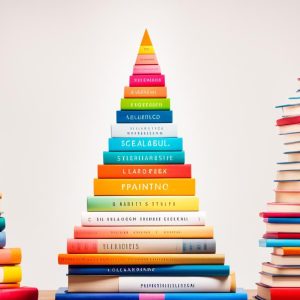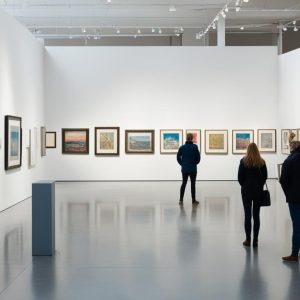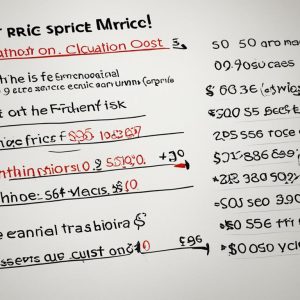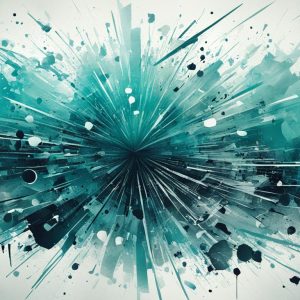Art has always been a reflection of human creativity and expression. However, there’s a new player in the art world – AI Art. With the advent of artificial intelligence, computers can now generate unique and diverse artworks using complex algorithms and machine learning techniques. This has sparked a major debate between AI Art and Human Art, raising questions about the nature of art and the role of the artist.
Key Takeaways:
- AI Art, or Artificial Intelligence Art, is the creation of artworks using computer algorithms and AI techniques.
- Machine learning and neural networks enable computers to analyze and generate art that mimics specific styles or genres.
- AI Art offers efficiency and the ability to generate unique works, but lacks the emotional depth of human-made art.
- Artists have differing opinions on the role of AI in the art industry, with some embracing it as a tool for creativity while others express concerns about job loss and artistic authenticity.
- The future of AI Art and its impact on the art world is uncertain as technology continues to evolve.
What is AI Art and How Does it Work?
AI Art, short for Artificial Intelligence Art, is an exciting field that combines the realms of technology and creativity. Through the use of advanced machine learning algorithms and technological advancements in art, AI Art brings a new dimension to the artistic landscape.
AI Art is created using a variety of techniques, including deep learning algorithms, neural networks, and generative models. These powerful tools enable computers to analyze vast amounts of data and generate art that mimics specific styles or genres, or even produce completely new and unique artworks.
Artists utilize specialized tools and software to create AI Art, such as Jasper Art and DALLE-2. These programs offer endless possibilities for creative expression, allowing artists to generate their own AI Art or manipulate existing works to produce new and captivating pieces.
“AI Art is an exciting fusion of technology and artistic expression. It allows artists to push the boundaries of their creativity and explore new artistic horizons.”
By harnessing the power of machine learning in art, AI Art enables artists to delve into new realms of artistic expression. These technologies enable computers to analyze patterns, understand artistic elements, and generate art with remarkable precision.
The possibilities with AI Art are truly limitless. Artists can create stunning visual artworks, explore abstract concepts, experiment with different styles and techniques, and even collaborate with AI algorithms to produce innovative and thought-provoking pieces.
To enhance their creative process, artists feed training data to the algorithms, including existing artworks, images, and metadata. The algorithms then analyze this data, learn from it, and generate new artworks based on the insights gained.
Overall, AI Art represents a transformative era where technology and artistic expression converge. It opens up exciting opportunities for artists to push the boundaries of traditional art forms and create truly mesmerizing works of art.
The Impact of Technological Advancements
The rapid advancements in technology have greatly contributed to the development of AI Art. With the advent of sophisticated machine learning algorithms, artists now have access to powerful tools and techniques that were once unimaginable.
These technological advancements not only enhance the creative process but also enable artists to explore new artistic territories. They offer new perspectives, allowing artists to experiment with innovative approaches and create art that resonates with contemporary audiences.
The fusion of art and technology has opened up new avenues for artistic expression and creativity. From generative art to immersive experiences, artists are embracing AI Art as a means to redefine the boundaries of the art world.
As technology continues to evolve, we can expect to witness even more groundbreaking advancements in AI Art. The future holds exciting possibilities, with AI Art becoming an integral part of the artistic landscape.
The Pros and Cons of AI Art
When it comes to the intersection of technology and art, AI Art has made a significant impact. This emerging field has both advantages and disadvantages, sparking debates and discussions within the art community.
-
Advantages of AI Art:
AI Art offers several benefits, one of which is its efficiency. With the help of computer algorithms and AI techniques, artworks can be generated at a much faster pace compared to traditional art. This increased efficiency allows artists to explore new ideas and experiment with different styles more readily.
Additionally, AI Art has the potential to create unique and innovative works that would be difficult or even impossible for human artists to envision. By leveraging machine learning algorithms, AI can generate art that pushes the boundaries of creativity and explores unconventional aesthetics.
-
Disadvantages of AI Art:
Despite its advantages, AI Art also has its limitations. One of the most significant drawbacks is the lack of emotional depth and personal touch that is often present in human-made art. Human artists bring their unique experiences, emotions, and perspectives to their creations, which adds a layer of authenticity and connection that AI-generated art struggles to replicate.
Furthermore, the ease of duplication and sharing poses challenges for artists in terms of claiming ownership and receiving proper credit for their work. With digital art, including AI-generated pieces, being easily reproduced and disseminated across online platforms, it becomes increasingly difficult to establish originality and protect intellectual property rights.
These pros and cons have contributed to a growing debate within the art world regarding the authenticity and artistic merit of AI Art. Some argue that AI Art challenges traditional notions of creativity and expands artistic possibilities, while others question its credibility as a genuine form of artistic expression.
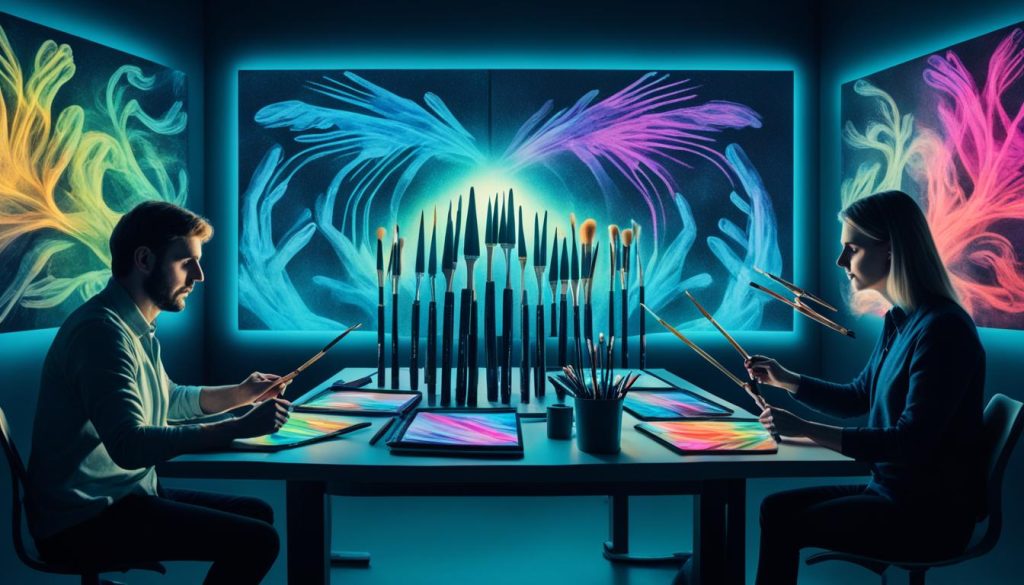
Can People Tell the Difference between AI Art and Human Art?
When it comes to distinguishing between AI Art and Human Art, there are certain characteristics that can help people identify the differences. AI Art often exhibits a uniform and repetitive pattern, higher symmetry, and a lack of imperfections commonly found in human art. The use of algorithms and machine learning in AI Art can result in an uncanny precision and flawless execution.
Another factor that can aid in identifying AI Art is the presence of a specific theme or style. AI algorithms can be trained to generate art that adheres to a particular color palette, composition, or subject matter, resulting in a noticeable uniformity in the artwork’s visual elements. This level of consistency is often more pronounced in AI-generated pieces than in human-made art which tends to display a wider range of styles and personal idiosyncrasies.
However, as AI algorithms continue to improve, the line between AI Art and Human Art can become increasingly blurred. The level of human intervention in the creation process can also impact the distinguishability of the artwork. Some artists use AI as a tool to enhance their artistic expression, combining their own creativity with the capabilities of AI. In such cases, it becomes challenging for viewers to discern whether the artwork was solely created by AI or if it involved human input.
Ultimately, the ability to differentiate between AI Art and Human Art requires careful observation and consideration of various factors such as the presence of repetitive patterns, symmetry, imperfections, and the artist’s background and techniques. As technology progresses and AI algorithms become more sophisticated, the boundaries between AI-generated art and human-made art may continue to blur, posing new challenges and opportunities for artists and art enthusiasts alike.
AI Art and the Artist Community
The artist community plays a crucial role in shaping the future of art, and when it comes to AI Art, opinions are diverse and often passionate. While some artists embrace the potential of AI as a tool for creating new forms of expression, others view it as a threat to traditional art forms and human creativity.
AI Art has sparked debates and discussions within the artist community, particularly regarding its impact on the job market for artists. Concerns are raised about the possibility of AI replacing human artists, leading to a potential loss of job opportunities and the stifling of human creativity. However, there are also artists who see AI as a source of inspiration and a tool for pushing the boundaries of their own art.
With the rapid growth of the market for AI Art, artists are navigating legal and ethical considerations surrounding AI Art ownership and intellectual property. Questions arise about the originality and authenticity of AI-generated works, raising important discussions about the role and rights of artists in an AI-driven artistic landscape.
It is clear that the impact of AI on the artist community is multifaceted and complex. The future of art with AI is a topic that continues to be explored, with artists, critics, and scholars actively engaging in shaping this evolving landscape.
“AI Art challenges our notions of creativity and authorship, forcing us to rethink the role of the artist in the creative process.”
As AI technologies advance, artists must adapt to these changes and find ways to harness the power of AI while preserving the essence of human creativity. This requires a careful balance between embracing new possibilities and safeguarding the unique qualities that make human-made art so captivating.
The Future of Art Unfolds
The integration of AI into the art world is an ongoing journey, with many unknowns and exciting possibilities. As artists navigate this uncharted territory, it is essential to foster a dialogue that encompasses diverse perspectives, respects artistic traditions, and embraces the potential of AI as a complementary tool for human creatives.
- AI can serve as a source of inspiration, helping artists explore new concepts and expand their artistic horizons.
- AI-generated artworks can challenge traditional notions of art, blurring the boundaries between technology and creativity.
- AI can democratize access to art, making it more inclusive and expanding the audience for artistic expression.
- AI Art raises important questions about the definition of art, the role of artists, and the future of artistic creation.
Image:
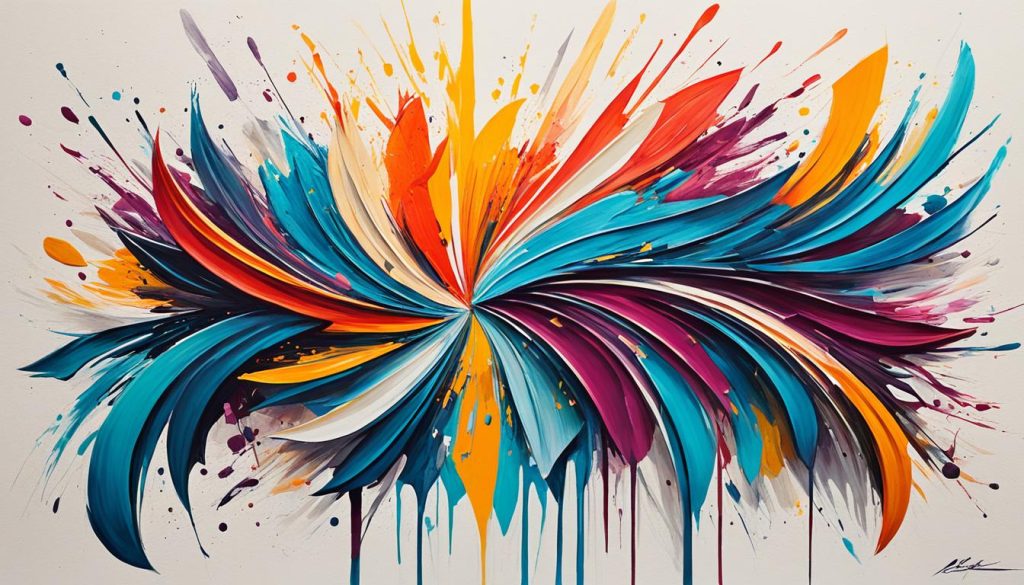
Conclusion
The debate between AI Art and Human Art has sparked intense discussions within the art world, highlighting the unique characteristics and implications of each. AI Art offers undeniable efficiency and the ability to generate unique works, revolutionizing the art production process. However, it often lacks the emotional depth and personal touch that are integral to human-made art.
Artists’ opinions on the role of AI in the art industry vary. Some embrace AI as a powerful tool for nurturing creativity and exploring new artistic possibilities. They view it as a partner rather than a threat. Others express concerns about the potential impact on job loss and the loss of artistic authenticity, fearing that AI could overshadow the human element of the art-making process.
As technology continues to evolve at a rapid pace, the future of human-made art remains uncertain. While AI Art has its advantages in terms of efficiency and innovation, the essence of human creativity and emotional connection are irreplaceable. The melding of AI and human artistry could potentially lead to groundbreaking collaborations and push the boundaries of artistic expression. However, striking a balance between AI and human involvement will be crucial to preserve the authenticity and uniqueness of art in the digital age.
In conclusion, the future of human-made art is intertwined with the advancements in AI technology. While AI Art will undoubtedly continue to evolve, it is the harmony between AI and human creativity that holds the key to the art world’s future. Embracing AI as a tool to enhance artistic expression while preserving the essence of human-made art will shape the direction of art in the years to come.
FAQ
What is AI Art?
How does AI Art work?
What are the advantages of AI Art?
How can people distinguish between AI Art and Human Art?
What are the artist community’s views on AI Art?
What does the future hold for AI Art?
Share this content:

